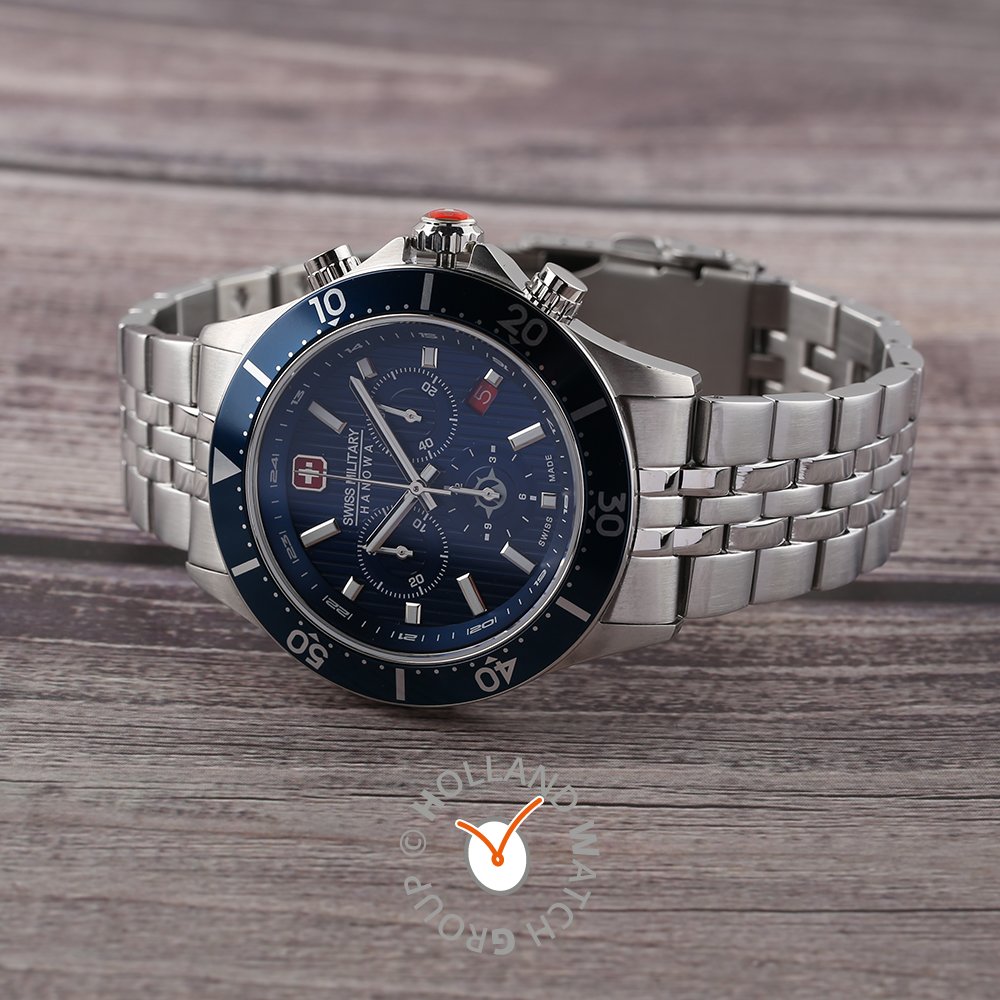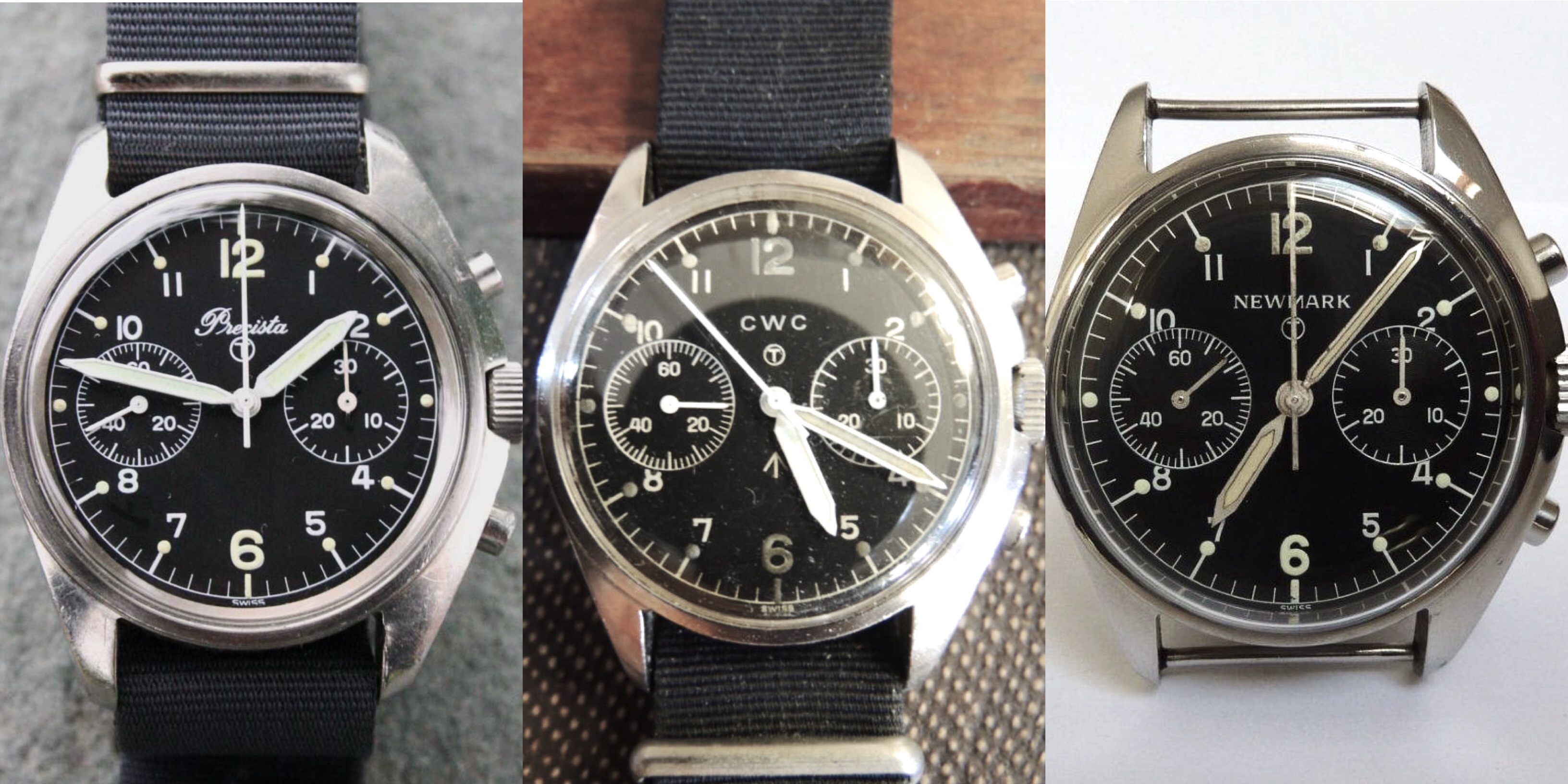Military Chronograph - Chronographs and watches with a military origin and/or history are undoubtedly some of the most popular watches we buy today. Putting them together, a military chronograph can be an attractive concept to many. More than a conglomeration of some cool factors, the military chronology has a real and interesting history.
Today, you can get new military chronographs in many varieties: reissues of watches actually made to government specifications for use by military personnel, modern interpretations that reference historical watches, and completely contemporary designs with an undeniable military feel. .
Military Chronograph

You know the absolute classic Hamilton Khaki Field watch because we can't stop recommending it as one of the best values. It is based on the Hamilton Field watch that was developed for the military decades ago, and this new automatic chronograph for 2021 is based on it. The design similarities are clear, with the basic case shape and dial design suited to the chronograph, but there is one notable difference to the basic field watch: it's a large 44mm wide, as opposed to the generally easy-to-wear khaki field. Dimensions. 38 mm Still, it's an exciting new offering from Hamilton and a strong proposition as a Swiss automatic chronograph under $2,000.
Berlin Wall Watch
Heuer produced similar watches for the German armed forces (Bundeswehr) in the 1960s, and Chin was commissioned to refurbish them in the 1980s – some were rebranded with Chin dials and sold to the public as "155s". Watch lovers love this kind of story and the value the watch reflects (the Heuer versions are especially loved), and were delighted when Chin recently brought the look back to its 158 chronograph. It's very true to the 155, but doesn't offer the exotic reverse function.
German brand Dudima first produced its M2 watch for NATO forces in the 1980s. Today, it's a classic among military watches, and the brand's modern lineup draws heavily from it. Not only does it have a sordid history and a unique look to chronograph and military watches in general, it's made a bit more special by being made of titanium. The lightweight material has all sorts of cool features and makes this bold big 46mm watch feel easy to wear on an average sized wrist. It certainly looks great on an integrated titanium bracelet, but it's also available on a Kevlar strap. Welcome to Watches You Should Know, a fortnight that highlights important or little-known watches with interesting stories and unexpected impact. This week: Military Monopusher Chronograph.
For much of the 20th century, soldiers' equipment issued usually included watches, which were often as basic and useful as possible. Chronographs, on the other hand, are complicated – but sometimes their integrated stopwatch function is what the military wanted. With a simple, usually white dial and only one pusher, some of the first watches made specifically for military use were a bit different from what you might expect from a military chronograph: today they are often called "military monopusher chronographs" to collectors. ."
They were considered strictly tools and were often seen on the wrists of Air Force and Navy personnel of many nations for decades. Although there were variations of this type of watch, which were made by different companies, the basic design was a 38.5 mm case with a spare, white dial and chronograph functions controlled by a single button.
Military Issued 1950s Lemania Mono Pusher Chronograph Cal. 15 \
The single pusher chronograph is a simpler solution to Breitling's earlier two pusher system and lacks some of the features that two pushers typically offer. Start, Stop button and Reset. By the time these monopusher chronographs were purchased for the military, the two-pusher system was already well established – if nowhere near as it is today – with examples produced for military use.
So the question arises: Why did the military continue to download these exact specifications when a more "sophisticated" solution was available? The added mechanical complexity and vulnerability of one more hole in the case isn't considered worthwhile — or two-button chronographs might be significantly more expensive — but we don't know the right answer. We know that such examples appeared in the early 1930s and were ordered and produced in the 1970s.
Monopushers such as the Heuer Flieger Reference 358 (1935) and the Hanhart Caliber 40 (1938) predate what collectors most associate with the phrase "military monopusher". . The British Ministry of Defense commissioned a watch that set the standard in a range produced by companies such as Lemania, Rodania, Breitling and Omega.

However, the defunct Lemania company is the name to mention here, although Breitling and Omega are more recognized today. When most watch enthusiasts think of Lemania, they think of the elegant chronograph movements that powered some of the most notable timepieces in history—often with the names of other watch companies (such as Omega, Patek Philippe, and Vacheron Constantin) on the dial. However, in addition to movements, the brand also produced its own complete line of watches, and many of the military monopusher chronographs found on the vintage market today feature Lemania on the dial and are powered by hand-wound Lemania caliber 15 movements.
Oriosa Military Chronograph With Stunning Patina Dial, Manual, Huge 37
They were primarily built for the British Royal Navy and Royal Air Force, and as vintage models they are particularly notable for their iconic 'broad arrow' symbol, which represents British Government property. Again. (There are also "sterile" dials that don't show the maker's markings unless you open the caseback, and there are many more types. The most common are white dials - especially noticeable, which is rare on military watches - but there are also examples of black dials.
Naturally, there are some differences between models from different manufacturers and different services over the years, and you may find movements like the Valjoux 23 or the Lemania 2220. Collectors usually divide these watches into three series, the latter Series 3 (also known as "6BB") being the most distinctive thanks to its 40mm asymmetric case, which allowed the crown and pusher to be pushed back and better protected.
The watch's monopusher, basic dial design and intended use are more or less consistent across different lines. If military watches are your thing, they are very unique and versatile for modern day wear and can often be found on the vintage market for a few thousand. If you love looks and history, but want a modern watch for life, check out the Vertex MP45. The history and development of watches is inextricably linked with the military. Although the Great War cemented the appeal and reliability of wristwatches among men, it was World War II that funded some of the biggest advances in watchmaking.
As aviation became an important part of modern warfare—much of World War II actually took place in the sky—watches became essential for managing new technologies and implementing strategies, paving the way for some of the 20th century.
Black Pilot Military 42 Mm Diameter Stainless Steel Chronograph Wristwatch
With the advent of war, many different types of watches were created with the pilot in mind, some more impressive than others. The British Royal Air Force received the famous IWC Mk 11, while across the Atlantic the US Army Air Forces were equipped with the more sophisticated A-11, referred to as the "watch that won the war".
The most attractive and specific variant of the pilot's watch, especially from a mechanical point of view, was the chronograph, which allowed pilots to make quick calculations and accurate timing. Although most of them have been underrated over the years, they are currently - sorry - flying high, not least because they offer a collection of purpose and beauty inside and out that deserve to be protected.
It all started with the Germans, who were said to be the only fighters to have proper stopwatches during World War II. The chronographs produced for the Luftwaffe are undoubtedly one of the most important watches of the Second World War, highly sophisticated inside and out, and the hugely popular Type 20 owes much of its design.

Hanhardt in Schwarzwald and Dutima in Glashütte (or UROFA-UFAG as it was called) supplied the Luftwaffe with pilot chronographs in 1938 and 1941 respectively. The flyback function was a new technical achievement that played a key role in cockpit functionality. This simple but effective mechanism was first discovered by Longines a few years ago in 1936
Auricoste Revives The Military Issue Type 20 Flyback Chronograph
Military drone range, laser range finder military, military range bags, military range targets, long range military radio, military radio range, military range finder, military long range binoculars, range rover military discount, military range rover, range of military drones, military range bag
0 Comments